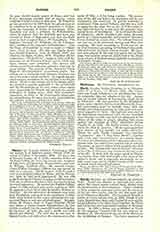

Nardo, Diocese of (NERITONENSIS), in southern Italy. Nardi) was already an episcopal see, when, about 761, Greek monks arrived there, fleeing from the persecutions of the Iconoclasts. Paul I assigned to these monks the episcopal palace and the revenues of the see, then vacant, and the city was made part of the Diocese of Brindisi. The monastery became a center of Greek culture; but, in 1090, Urban II put Latin Benedictines there, and Paschal II gale episcopal jurisdiction to the abbot; for a long time the Greek and Latin rites were maintained together at the monastery. In 1388, a bishop was established at Nardi) by the antipope, Clement VII, but was deposed by Boniface IX, who entrusted the care of the diocese to the Archbishop of Otranto. The latter proposed to suppress the Greek Rite in the diocese, but, at the instance of the Benedictines and of King Ladislaus, the pope maintained its use. From the report made on this subject, it is known that the Greek Rite obtained in sixteen towns of the diocese, and that there was a protopope at Balatone. The see was reestablished in 1413, in favor of Giovanni degli Epifani. Other bishops were Ambrogio Salvi, O.P. (1569), who introduced the reforms of the Council of Trent; Fabio Fornari (1583), who also tried to abolish the use of the Greek Rite; Lelio Landi (1607), a learned Orientalist, employed by the Congregation de auxiliis and also in the correction of the Vulgate; Fabio Chigi (1635), who became Alexander VII; Antonio Sanfelice (1707), founder of a public library and of a workhouse for girls. The diocese is directly dependent on the Holy See. It has 16 parishes, with 70,500 inhabitants, 2 houses of Franciscans, and 4 religious houses of women, 2 schools for boys, and 4 for girls.
U. BENIGNI

